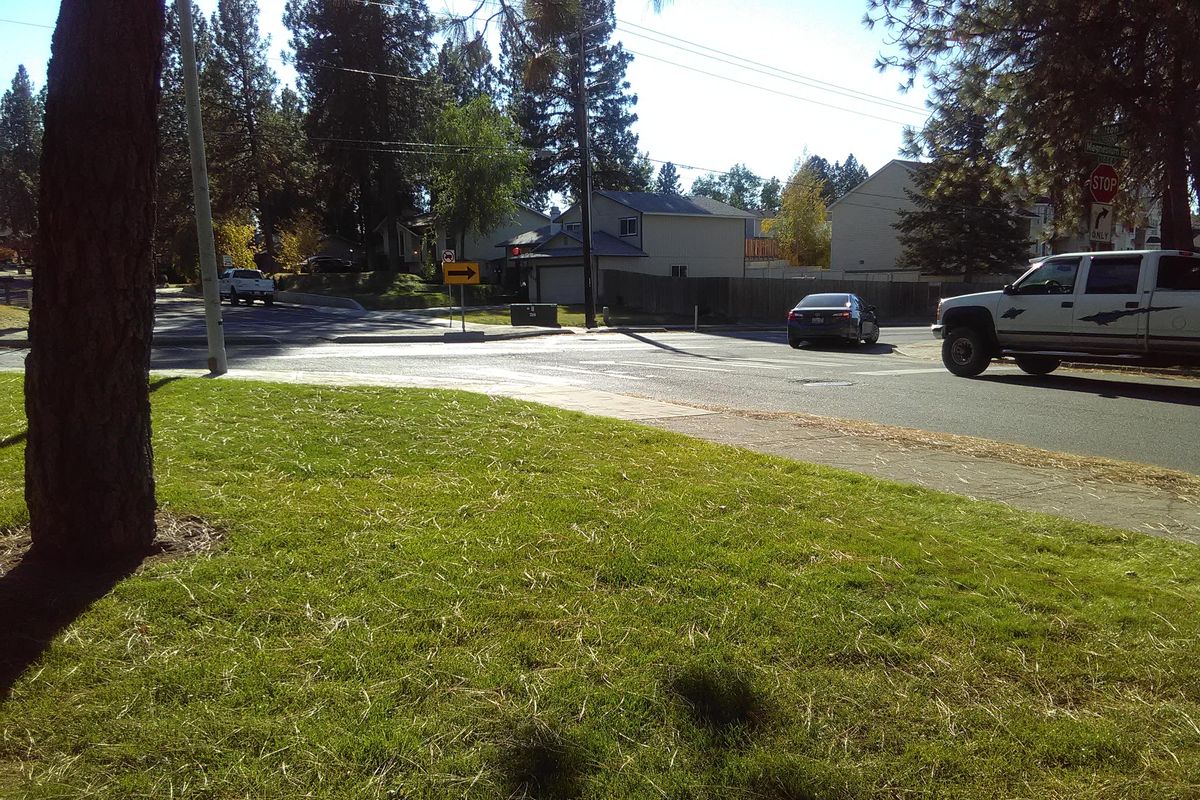Shiloh Hills Neighborhood Council in formative stage

Spokane’s oldest neighborhoods were established in the 19th century, built by men who rode horses to work every morning. But not Shiloh Hills, where contractors guided construction of the neighborhood’s vast array of high-density housing with laptops and cellphones.
“Thirty, forty years ago this (neighborhood) was country,” said Shiloh Hills Neighborhood Council Acting Chair Alex Knox. “The city boundaries used to end at Francis.”
The city is struggling to catch up.
“We have almost no brick and mortar services;” said SHNC acting Community Assembly Representative Cliff Winger. “There’s one fire station, and that’s it.”
Annexed by the city in pieces over the past few decades, Shiloh Hills did not get its own neighborhood council until 2015, when it split off from the Nevada/Lidgerwood neighborhood at Francis Avenue.
The council is still in the midst of its own construction; Winger and Knox took control just a few months ago. “We fell apart in April,” said Winger. “Nobody wanted to take the lead.”
Knox took the gavel as acting chair, and Winger took on the Community Assembly representative role. While Knox put together a new 18-page constitution, Winger canvassed the neighborhood’s businesses to drum up interest.
“I didn’t get to them all, but I think I hit around 500,” Winger said. “I didn’t want to see the neighborhood council disintegrate.”
Winger’s canvass attracted 35 people to a neighborhood safety day event. Since the event, council meeting attendance has held steady in the 30s.
Shiloh Hills encompasses the city’s incorporated land east of Division Street and north of Francis Avenue. It covers both sides of Division and the Newport Highway, stretches to Hawthorne Road and includes tip-outs to cover Westview and Morton courts, the Hermitage Village Shopping Center and Holy Cross Cemetery.
While retail zones and apartment complexes dominate the skyline, the local park and a nearby street divider dominate council meetings.
Friendship Park, established in 1978, is loaded with amenities including tennis courts, a soccer field, a paved walking path, benches, picnic tables, a splash pad, restrooms and a play area. Daytime visitors have plenty to do.
Unfortunately, so do nighttime visitors. “Basically, everyone around the park has come to our meetings, saying that at night it becomes a block party,” said Knox.
The city parks department agreed to walk the park and identify ways to bite into nocturnal crime. Knox said the city plans to trim hedges, take out some trees, add lighting and put up vehicle barriers.
“If we can light this park up, I think it would discourage a lot of the criminal activity,” said Knox. “It would save a lot of headaches for the residents around here.”
Knox encourages neighbors to call Crime Check and report criminal activity, even if they don’t expect anyone to come out. “The (police) are counting the amount of calls, and they are planning their hot spots,” he said. “If we can pinpoint where our hotspots are … we can really help the police narrow it down.”
The neighborhood battle over an island divider at the intersection of Colton Street and Magnesium Road predates the council. The divider, designed to protect the neighborhood from traffic in and out of the big box stores to the north, has proven to be largely ineffective.
“Traffic has to go somewhere,” said Knox.
Larger vehicles often drive over the divider, while smaller vehicles cut through residential side streets.
“A lot of them go 20-25 mph, but some go 45,” said Knox. “We are having a lot of issues with people almost getting hit, children almost getting hit.”
At the August meeting, after a spirited discussion, the neighborhood voted to have the island removed.
“We had a really great debate about what we needed to do,” said Knox. “I think there were only three that voted against it.”
City Engineer Bob Turner concurred with the decision. “That island is driven around and driven over a lot, so it’s really not effective,” he said.
Turner and the neighborhood plan to hold public forums to discuss the best options for the intersection. “We’re going to do a study to find out what’s going on,” said Turner.
“We’re not going to just take it out and say we’re done,” said Knox. “We want some sort of traffic calming solution, and we want to get more input from the people who actually live in that area.”
Options discussed thus far include a roundabout, a four-way stop and two-way stops in either direction. All ideas are welcomed.
To get the neighborhood’s apartment dwellers involved, Knox and Winger are working on a city engagement grant proposal to put posters in the central areas of each apartment complex.
“There are issues that are specific to apartment communities that we could be dealing with,” said Knox. “People don’t know that there is a forum to solve those issues.”
“We want to get those people involved because they have a voice, too, but it’s hard because they turn over quickly,” Knox said.
The constitution Knox put together is designed for a full council and several committees, so Knox and Winger have their work cut out for them.
“We have about 13,000 people who live here,” said Winger. “We won’t be able to make any neighborhood improvements unless people come and get involved.”